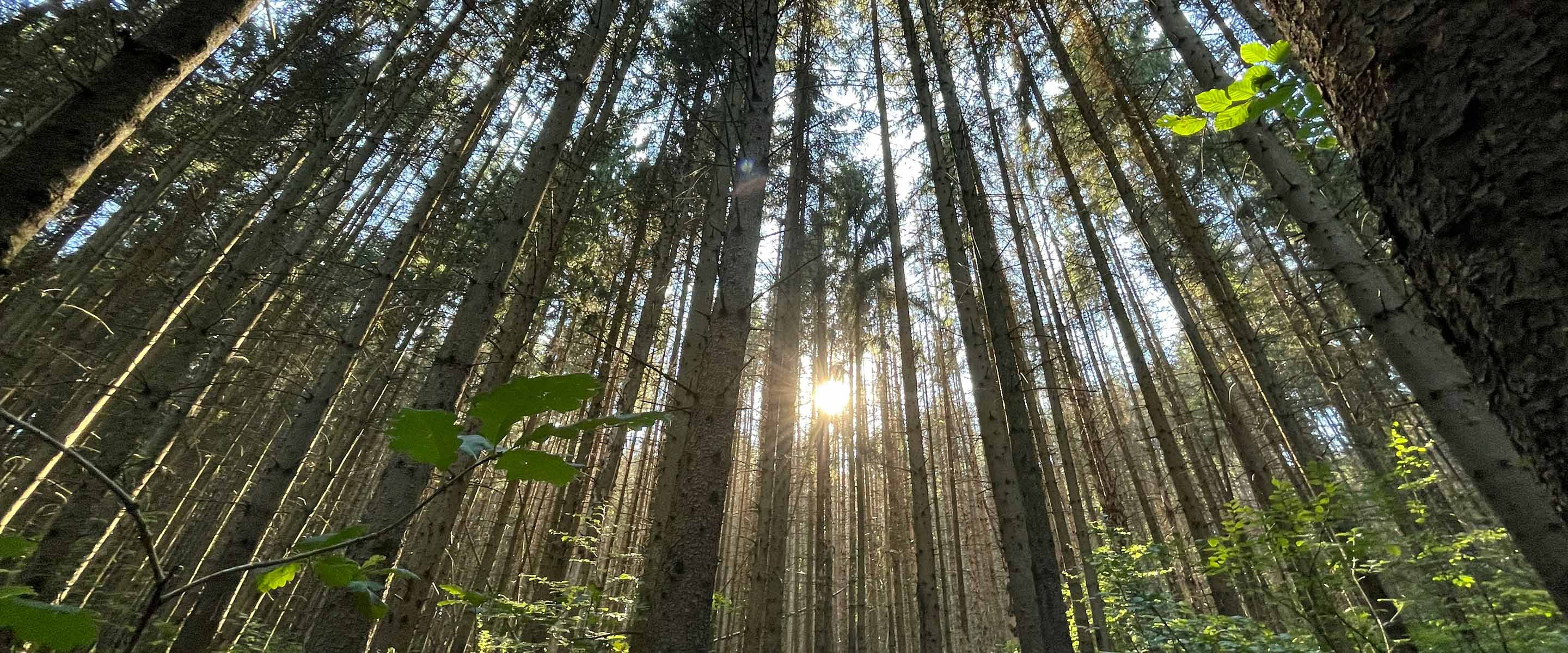Intro to Carbon Offset Registries


🌍 Carbon markets can feel overwhelming—fragmented data, limited transparency, and conflicting advice make it hard to know where to start. In this webinar, our experts give a clear, practical introduction to the VCM.

Certified Offset Portfolios
Buying high-quality carbon offsets has never been easier. Explore CBCO Portfolio 22-1 and get instant access to fully vetted carbon offsets.
An overview of the role carbon offset registries play in the carbon market, and why they matter.
Carbon offsets are a tool for businesses and individuals that have made a commitment to reach net-zero emissions or are working to reduce their emissions. One carbon offset represents a metric ton of avoided or captured carbon that companies and individuals can purchase to meet their environmental goals. Carbon offset registries issue credits based on defined certification protocols, keep track of available offsets in the marketplace, and when offsets are purchased, registries are responsible for tracking the retirement of credits to ensure that two purchasers cannot claim the same verified carbon reduction. Ultimately, carbon offset registries play a critical role in ensuring that a carbon offset is legitimate and that once its environmental benefit is claimed, it is retired from the market. While this sounds like a straightforward task, complexities abound.
The State of the Carbon Markets
The voluntary carbon market seems to be at a crucial balancing point. Unified and consistent efforts toward higher quality (better MRV, verification, and industry standard definitions of quality) are countering skepticism about credit quality from some media outlets. Increasing investment and need for climate tech advancement is positioned against lower demand and lower market value of credits. There is no shortage of businesses selling carbon reduction and working on net zero goals, and since it’s impossible for businesses to eliminate GHG emissions overnight, buying carbon offsets is a way for companies to make good on their environmental aspirations in the short term while continuing to work toward making their own operations cleaner in the long term.

Ready to Talk About Your Sustainability Goals?
Get tailored sustainability solutions that meet your business’s unique needs. CarbonBetter delivers tomorrow’s climate solutions—today. Contact Pankaj Tanwar, Managing Director of Climate Services, to get started.
Not ready yet? Read our client stories to see what it’s like to work with us.
What Do Carbon Offset Registries Do?
Carbon offset registries develop standardized protocols for project registration (to issue carbon credits), keep track of available credits in the marketplace, and make sure that the environmental benefits associated with individual credits aren’t being allocated to multiple entities. If two different businesses claim the same credit, the environmental impact is halved because there’s only one metric ton of carbon reduction happening.
Registries track the owners of a given credit, assign credits a serial number, and make that information publicly available through a ledger. When a purchaser buys a credit to offset their own emissions, the registry will retire that credit on the ledger to make sure no one else can buy it again.
How Carbon Credits Are Created
Companies release carbon into the atmosphere as part of routine operations, while carbon offset projects, including reforestation and renewable energy projects, can remove carbon from the atmosphere. Achieving the correct balance of addition and removal can get us to net zero, but it’s not realistic to expect every company to cut its emissions to zero. The carbon market, where carbon offsets are certified, sold, and retired on registries, gives companies and individuals the ability to “purchase” carbon avoided or reduced in another project and/or area to offset their own emissions. Net-zero is possible without the elimination of emissions due to carbon offsets.
To create a carbon offset, it isn’t enough to plant a forest and claim a future carbon reduction. Carbon offset registries have established standards, documentation, third-party verification requirements, and monitoring protocols for projects to ensure that any credit issued has been fully verified to ensure they meet strict requirements. Registries act as a third party between project developers and buyers to ensure that the offsets sold deliver the promised environmental impact in a transparent and traceable way.
“Brisk sales of meaningless offsets are leading to claims of climate progress that isn’t actually happening.”
Akshat Rathi, BLOOMBERG
What Happens When a Carbon Offset Project Fails?
There are numerous types of carbon offset projects—for example, renewable energy generation, methane capture, direct air capture, N20 abatement, and more—many nature-based projects are related to forests, including improved forest management, reforestation, afforestation, and avoided deforestation. Trees are carbon-capturing powerhouses because they store carbon in their trunks and branches as they grow so they offer an ideal carbon sequestration solution.
But with wildfires on the rise at home and abroad, what happens when a project area that has issued and retired credits is burned to the ground, releasing all of the stored carbon in the plant mass with it? When project developers sell credits, they are either encouraged or required (depending on the protocol used) to allocate a percentage of their issued credits to the registry as a buffer pool rather than selling the credits. This acts as a form of insurance—if a forest project fails or a forest burns down, the registry can deliver credits from the buffer pool to buyers of the failed credits, but it’s impossible to know how much buffer needs to remain unsold to cover any future catastrophic event and ensure all carbon claims remain valid.
Of course, non-forest projects are also subject to unforeseen circumstances that might prevent their ability to deliver on their carbon claims, so it’s important for organizations to understand the protocol backup plan if a project fails so you aren’t scrambling to replace credits that no longer represent a metric ton of carbon emissions.
A more recently developed mechanism with broader applicability is formal project specific insurance from providers like Kita and Oka that protect against risks like invalidation, reversal, or fraud. The mechanisms of premium and payout for the contracts differ between insurers, but these offerings are important mechanisms that seek to create more security for carbon offset purchasers.
Other Carbon Offset Considerations
While carbon offsets provide a practical solution to companies and individuals working to meet their environmental goals, some issues can arise in its real-world implementation.
There are many carbon offset registries and they have each created their own methods to certify, issue, and retire offsets, which means the space is fragmented, with no primary accounting system for all available offsets. Without a single source of truth for retirements, it can be difficult to ensure that every offset is retired accurately.
With many registries come many certification standards and labels, and not all are created equal, so registration alone is not enough to know you’re truly offsetting a metric ton of carbon. In addition, credits with older vintages may have been certified using protocols that have since been improved.
Additionality is an important consideration for a carbon offset. Would the carbon reduction or avoidance associated with the offset have happened if the project had not been certified? For example, if you purchase a carbon offset that claims to protect a portion of a forest from deforestation, if that forest was already protected land prior to the certification, that offset may not pass the additionality test.
Leakage is another consideration. Leakage occurs when efforts to reduce emissions in one place (the certified project) simply shift carbon-releasing activities to another location where emissions aren’t counted. Projects with leakage like this are not delivering on their environmental promises.
Major Registries in the Voluntary Carbon Offset Market
- American Carbon Registry
- Climate Action Reserve
- Gold Standard Impact Registry
- Verified Carbon Standard (Verra)
- Plan Vivo
- Puro.Earth
Getting the Right Help
If figuring out whether a carbon offset is legitimate seems like a lot of work, that’s because it is. Most businesses don’t have the expertise in-house to navigate the carbon markets efficiently and successfully. Carbon offset buyers need to consider and balance trade-offs regarding the price per metric ton, verification standard, vintage, additionality, leakage, quantification methodologies, geography, technology, impact on local communities, whether the project has created broader environmental damage, and other factors.
CarbonBetter® shortcuts this carbon offset buying process by providing clients with instant access to fully vetted carbon offsets through our Certified Offset Portfolios in addition to directly sourcing credits to meet specific needs and goals. Our portfolios are built around proven technologies, verified additionality, minimal leakage, vintage, and impactful co-benefits, and align with the Integrity Council for the Voluntary Carbon Market’s Core Carbon Priniciples. CBCO Portfolio buyers also receive ready-to-use marketing materials to share their sustainability story and impact with customers, team members, and other stakeholders. Contact us to learn more.
Yes, but some are more reputable than others. Carbon offset registries act as a third party between project developers and buyers to ensure that the offsets listed on the registry for sale deliver the promised environmental impact in a transparent and traceable way. Registries have established standards, documentation, third-party verification requirements, and monitoring protocols for projects to ensure that any carbon credit on their marketplace has been verified and meets strict requirements. Trustworthy registries have public ledgers where you can validate issuances of credits, project data, and retirement information. Navigating the carbon markets can be a daunting task without the right help. Contact us today to learn more about our hand-curated carbon offset portfolio and bespoke carbon offset sourcing options.
There are several voluntary carbon offset registries, and they each have their own method to certify, issue, and retire offsets. Some registries include the American Carbon Registry (ACR), Climate Action Reserve (CAR), Gold Standard, and Verified Carbon Standard (VCS). With the exception of the Gold Standard’s Marketplace, you cannot typically buy credits directly from a registry. Setting up accounts on the registries to take title of the carbon offset credits can be cost prohibitive and take time, thus CarbonBetter typically sources and retires carbon offsets on behalf of clients. To make it even easier to purchase carbon credits, our curated CarbonBetter Certified Offset (CBCO) Portfolios give buyers instant access to various hand-picked and vetted carbon offset projects purchased in a single transaction through us. Contact us to learn more.
Yes. But it can be difficult to ensure that every offset is retired accurately, because there is no single source of truth for carbon offset retirements—each registry has their own public view of retirement data which varies slightly in format. Plus, the more offsets you buy, the harder it can be to keep track of them all. That’s where CarbonBetter can help. To make buying from multiple registries even easier, CarbonBetter Certified Offset (CBCO) Portfolios give you instant access to a variety of hand-picked and vetted carbon offset projects that can be purchased in a single transaction. Contact us to learn more.
All reputable carbon offset registries are similar in that they have established standards, third-party verification requirements, and monitoring protocols for projects to ensure that any carbon credit on their marketplace has been verified, but each registry is slightly different in the types of projects they list, and the customers they typically serve. Most organizations don’t have an in-house team that can navigate the carbon markets to find carbon offset projects that meet their exact needs, which is an area where CarbonBetter specializes. Our bespoke carbon offset sourcing service can help you meet specific requirements for vintage, geography, project technology, and other attributes that matter to your organization. Contact us to learn more.

About the Author
Pankaj Tanwar is Managing Director of Climate Services at CarbonBetter. He has experience leading Fortune 100 companies through their sustainability journeys, including sustainability driven growth in the food industry. Pankaj holds an MBA from Northwestern University’s Kellogg School of Management and a BTech in Mechanical Engineering from the Indian Institute of Technology, Kanpur.